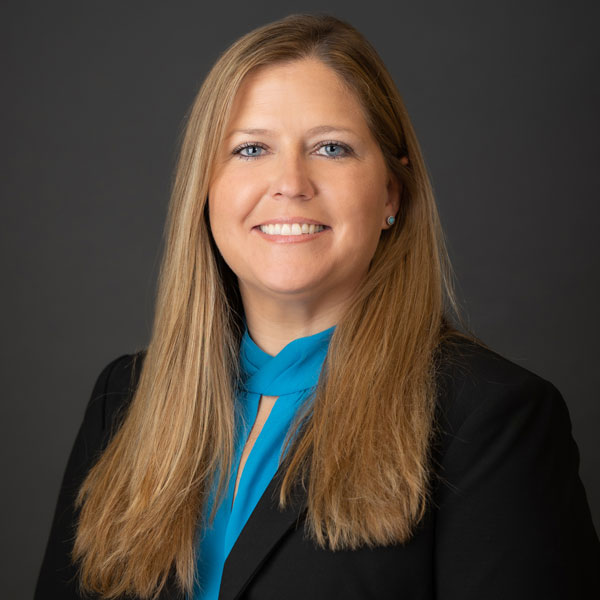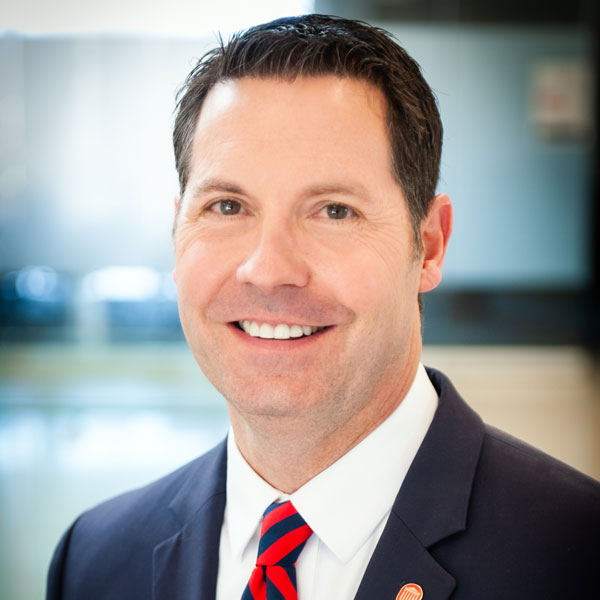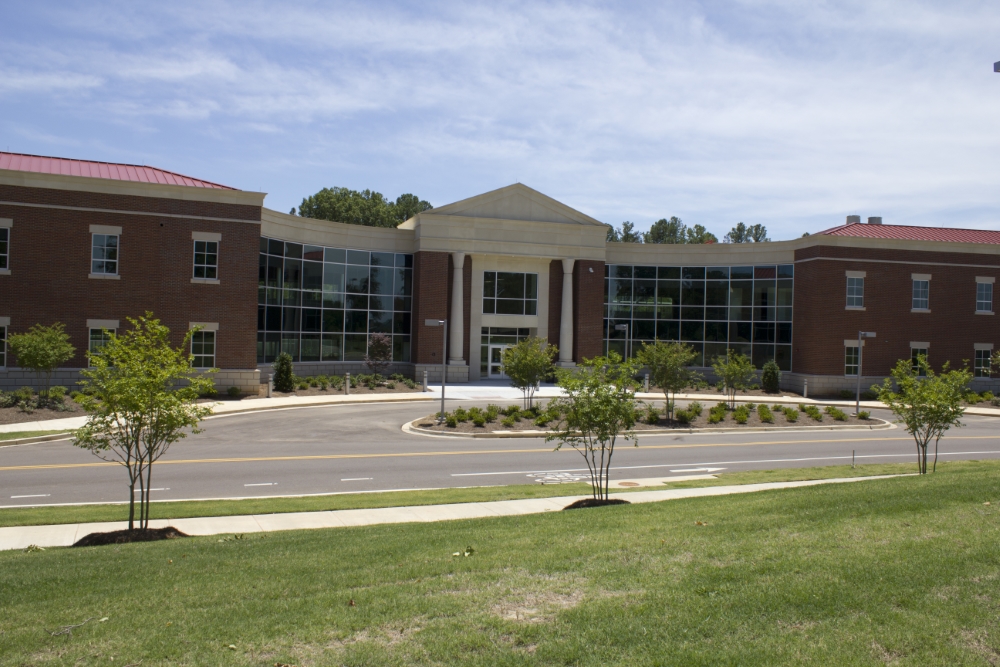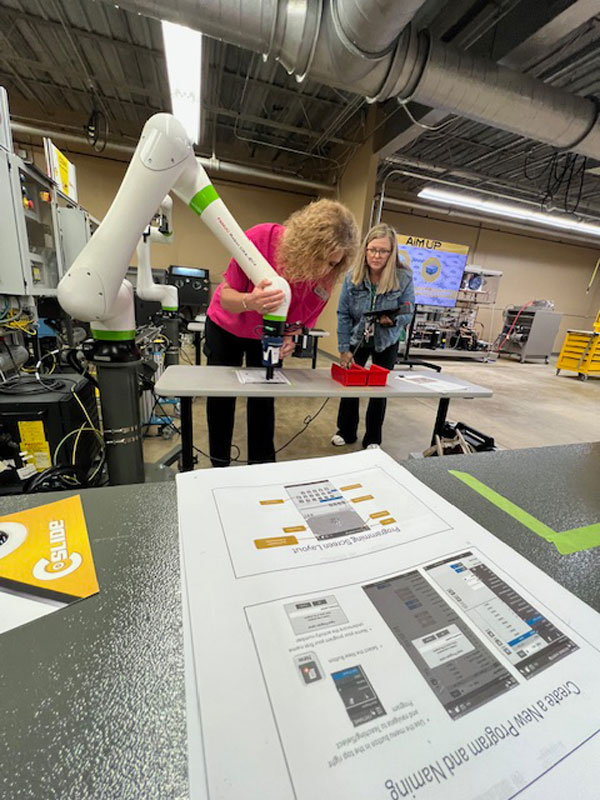Aiming up places Mississippi workers on the fast track to good jobs.
When it comes to providing the skilled workers that expanding companies need to hire on day one, few states match Mississippi’s ability to train and equip that level of talent.
These are not empty promises. Mississippi’s community and junior college system was ranked as the No. 1 program in the U.S. by WalletHub. The comprehensive study compared institutions by cost and financing, classroom experience, education and career outcomes.
Educationally, about 85% of all Mississippi residents over the age of 25 have earned a high school diploma or higher, and more than 22% have earned a bachelor’s degree or higher.
The bar for career education and training in Mississippi has been set high and is getting higher each year.
Courtney Taylor, executive director of AccelerateMS, the Office of Workforce Development for the State of Mississippi, says that Mississippi succeeds in worker preparation because it takes a broad-based approach to career education and training. Three programs illustrate this pathway: Talent Solutions; AiM UP; and Career Coaches.
“Our Talent Solutions office has been around for four years,” says Taylor. “We’ve been able to move our workforce development pipeline to produce more of the talented workers that we need to fill jobs across the state. The Talent Solutions piece sits in the gap of what we can do and what we can’t do. This means that companies don’t have to bother themselves with all the alphabet agencies. This is not your typical approach to customized training. What separates us is that it is directly connected to our pipeline development. It connects to community colleges and K-12 programs.”
She cited a recent example. “A company came to us and said, ‘We need more people who can read drawings in engineering.’ We took that input and baked it into everything we did for that firm. We found out we needed to create responsive programs. That required responsive dollars from the state. The state gave us those funds. Now we have the ability to strategically recruit the educators, trainers and advisors needed to get the job done.”
AccelerateMS works for employers because it provides full labor shed mapping for each project. “We are the first office in Mississippi to do that,” says Taylor. “We are assisting Amazon and other employers right now. The capital investment boom by major employers in Mississippi has forced us to respond. We may be a small state, but once a particular workforce need is identified, we can handle it. Being small enables us to move fast.”
Aiming Higher; Training Faster
The second major program to make a difference in Mississippi is AiM Up – which stands for Advancements in Manufacturing Upskilling Program. The goal of this program is to shape the future of advanced manufacturing through education, innovation and workforce development.
“Mississippi State University came on board with us very early on to help set this up,” Taylor notes. “This program builds advanced training hubs at community colleges and universities.” Today, partner institutions include MSU, East Mississippi Community College, Mississippi Gulf Coast Community College and Northeast Mississippi Community College.
“AiM UP is a true advanced training program in robotics and automation,” says Taylor. “They integrate this training into the curriculum and pull in industry leaders to train students and workers on this equipment. Community colleges use this to train the workforce of the future. Three community colleges are on board; two more will come on board this fall.”

“We may be a small state, but once a particular workforce need is identified, we can handle it. Being small enables us to move fast.”
— Courtney Taylor, Executive Director, AccelerateMS, Office of Workforce Development
The third major initiative is called Career Coaches. “The Legislature and governor started this program,” says Taylor. “This is the third year. It was started by the CREATE foundation in Tupelo. It connects students to the labor force and quality career opportunities. Having career coaches embedded at the schools is the key. They are not school employees. This is a statewide solution with local application. Driving the talent pipeline is the goal.”
So far, Mississippi has been able to recruit and place 203 career coaches around the state in local schools. “This program is making a significant difference in connecting people to the local job market,” says Taylor. “This is a game-changer.”
Community Colleges Fill the Gap
Jason Mattox, vice president of career and technical education and director of workforce training at Northeast Mississippi Community College, says that “we do a lot of industry specific training – from robotics and advanced manufacturing to leadership training and forklift operation. We either train the workers or find someone who can.”

“There is growing momentum for economic development both statewide and on our campus … We’re excited to have the university’s first-ever Vice Chancellor for Research and Economic Development actively involved in driving this progress.”
— William Nicholas, Director of Economic Development,
Office for Research and Economic Development, University of Mississippi
From production technicians and aerospace technicians to fiber optic work and machining technology, NMCC has a training program for virtually everyone. “We help local industries with whatever training they need,” Mattox says. “It may be welding or electrical work or another trade. About 2,000 people go through our training programs each year.”
Case in point: Caterpillar needed a CNC (computer numerical control) machinery operation training program. NMCC put one together for the company. “They are one of the largest employers in our five-county region,” says Mattox. “This training program has been a huge success. We received great feedback from Caterpillar. Right now, we are backed up with a list of people wanting to train for a job at Caterpillar. Every 14 weeks, we start a new program.” This methodology is repeated over and over at NMCC for a variety of skillsets needed by employers in Northeast Mississippi.
Soon, NMCC will be able to train a whole lot more students and workers. The college recently acquired a vacant 360,000-sq.-ft. building that the school plans to turn into a training center. “It is about three times the size of what we need, but that just gives us room to grow,” Mattox says. “Once we get that building developed, we plan to move all our workforce training, adult education, CTE and continuing ed over there.”
The additional space means that programs that are currently full – such as HVAC, automotive and precision machining technology – will be able to accommodate more learners. “It was an old furniture plant,” Mattox says. “We know the need is there in our community. This new facility helps us meet it.”
Another benefit that sets NMCC apart, says Mattox, is affordability. “We are about half the price of four-year schools,” he says. “Tuition here for career training curriculum is just $1,825. Many students are able to go to class for free because of the Northeast Promise Scholarship. That is a last-dollar program for any students going into a career technical program. A student can get all tuition and fees paid for through this program.”

The Innovation Hub at Insight Park at Ole Miss is turning startups into commercial successes around Mississippi.
Photo courtesy of University of Mississippi
Training Innovative Rebels
and Cyber Sleuthing Bulldogs
Community colleges aren’t the only institutions involved in worker training in Mississippi. At both the University of Mississippi and Mississippi State University, the students of today are getting a head start on the workforce of tomorrow.
William Nicholas, director of economic development for the Office for Research and Economic Development at the University of Mississippi in Oxford, is in charge of the University of Mississippi Insight Park. Sparking innovation and entrepreneurship has been the goal of the complex since its inception in January 2012.
“On average, we have 21 tenants in our innovation hub, and we would like to add another facility here,” says Nicholas. “We are exploring options to add an additional facility on a 5-acre site located just west of this building.”
Producing success stories is Insight Park’s calling card. Jon Scala, a double graduate of Ole Miss, nurtured a small healthcare auditing company he bought for $1 million in Mexico Beach, Florida, and moved to Insight Park in 2014. He hired a dozen Ole Miss accounting grads and eventually grew the company to 1,700 employees. Called Cloudmed, the firm is now based in Atlanta and was recently acquired by R1 RCM Inc. for $4.1 billion.
Another Insight Park startup, Curtsy, was founded by three Ole Miss students before eventually going to Y Combinator in Silicon Valley and raising $15 million. The firm made $35 million in revenue last year.
Insight Park houses both the Office of Economic Development and the Office of Technology Commercialization. This summer, the Oxford-Lafayette County Economic Development Foundation (EDF) will relocate its offices to the Innovation Hub at Insight Park.
“There is growing momentum for economic development both statewide and on our campus,” says Nicholas. “We’re excited to have the university’s first-ever Vice Chancellor for Research and Economic Development actively involved in driving this progress.”
Jim Martin, associate vice president for the Office of Research and Economic Development at Mississippi State University in Starkville, says he’s excited about the potential growth and impact of the new Mississippi Cyber Center in Gulfport. Opened on Nov. 9, 2022, the center is a collaborative effort of MSU, Mississippi Gulf Coast Community College, and multiple state and federal partners.
The new facility is located on the MGCCC Harrison County Campus in Gulfport. The goal of the center is to strengthen Mississippi’s cybersecurity capacity and workforce through cross-sector collaboration.
Another piece of the cyber puzzle is the Mississippi Cyber & Technology Center (MCTC), a 105,420-sq.-ft. facility at Keesler Air Force Base in Biloxi. This new building is designed to serve as the operational headquarters for the Mississippi Cyber Initiative.
— by Ron Starner

AIM UP stands for Advancements in Manufacturing Upskilling Program, an initiative launched by Mississippi State University to promote upskilling of students and workers in advanced manufacturing technology.
Photo courtesy of Accelerate MS

